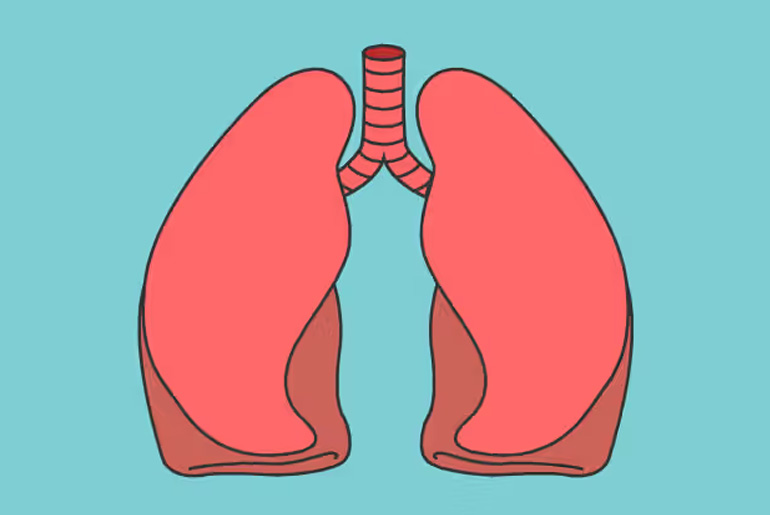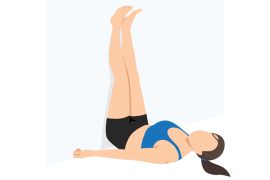Yoga provides a holistic approach to enhancing lung capacity and managing respiratory conditions through a combination of breathing techniques, strengthening exercises, stress reduction, and mindful movement. By incorporating yoga into a regular routine, individuals can experience improved respiratory function, alleviation of symptoms associated with respiratory conditions, and overall enhanced well-being. The practice of yoga encourages deep and mindful breathing, which can strengthen respiratory muscles and improve lung capacity.
Additionally, specific yoga postures and movements can promote better posture and open up the chest, facilitating easier breathing. Moreover, yoga’s focus on reducing stress and promoting relaxation can help alleviate tension and anxiety that may exacerbate respiratory symptoms. Overall, integrating yoga into one’s lifestyle offers a comprehensive approach to respiratory health, fostering improved lung function and overall wellness.
1. Bolster the immune system:
Regular yoga practice has demonstrated the ability to bolster the immune system, thereby diminishing the likelihood of respiratory infections and illnesses. Through its immune-boosting effects, yoga aids in thwarting exacerbations of respiratory conditions and expediting recovery from respiratory-related ailments. By fortifying immune function, yoga serves as a proactive measure against respiratory challenges, fostering resilience and promoting overall respiratory health.
2. Enhancing oxygen circulation:
Yoga practices that focus on controlled breathing and mindful movement play a vital role in enhancing oxygen circulation throughout the body. By incorporating techniques such as pranayama (breath control) and mindful movement into a yoga practice, individuals can experience improved oxygenation, supporting overall respiratory health. Enhanced oxygen circulation not only boosts energy levels but also helps reduce symptoms of respiratory conditions such as asthma and chronic obstructive pulmonary disease (COPD). Through regular yoga practice, individuals can cultivate a deeper awareness of their breath, promote better oxygen exchange in the lungs, and ultimately improve their respiratory function and overall well-being.
3. Body’s relaxation response:
Yoga serves as a catalyst for stimulating the parasympathetic nervous system, inducing the body’s relaxation response. This physiological reaction aids in alleviating symptoms commonly associated with respiratory conditions, including wheezing, shortness of breath, and chest tightness. By promoting relaxation, yoga helps to reduce stress and tension, subsequently calming the respiratory system and enhancing overall well-being. Through regular practice, individuals can cultivate a deeper sense of relaxation and ease, mitigating the impact of respiratory symptoms and fostering a healthier respiratory function.
4. Lung flexibility and capacity:
Enhancing lung flexibility and capacity is a key aspect of improving respiratory function, and yoga offers specific poses designed to stretch and expand the chest and ribcage. Poses such as Camel Pose (Ustrasana), Bow Pose (Dhanurasana), and Cow Pose (Bitilasana) are instrumental in promoting deep inhalation and full expansion of the lungs. In Camel Pose, practitioners arch their back, opening the chest and facilitating deep breaths. Bow Pose involves lifting the chest and legs, creating a deep backbend that expands the chest for full inhalation. Cow Pose, often combined with Cat Pose (Marjaryasana) in a flowing sequence, helps stretch the spine and chest, promoting deep breathing. Regular practice of these poses enhances lung flexibility and capacity, contributing to improved respiratory function and overall well-being.
5. Improving posture:
Improving posture is crucial for enhancing respiratory function, as poor posture can restrict lung expansion and airflow. Yoga plays a vital role in correcting posture imbalances by promoting alignment and body awareness. Poses such as Mountain Pose (Tadasana) and Warrior Pose (Virabhadrasana) are particularly effective in encouraging proper spinal alignment, which facilitates better lung expansion and airflow. In Mountain Pose, practitioners stand tall with feet rooted into the ground and spine elongated, promoting proper alignment from head to toe. Warrior Pose engages the entire body, promoting strength and stability while encouraging an open chest and elongated spine, facilitating optimal lung function. By incorporating these and similar poses into a regular yoga practice, individuals can cultivate better posture, leading to enhanced lung capacity and respiratory efficiency.
6. Chronic stress:
Chronic stress can have detrimental effects on respiratory health, exacerbating respiratory conditions and impairing lung function. Yoga offers effective strategies for stress reduction, mindfulness, and relaxation, which can significantly benefit respiratory health. Practices such as meditation, deep breathing, and guided relaxation techniques are integral components of yoga that promote stress reduction and mental well-being. By incorporating these practices into a regular yoga routine, individuals can experience a reduction in stress levels, leading to improved respiratory health and enhanced lung function. Meditation helps calm the mind, alleviate anxiety, and promote a sense of inner peace, while deep breathing exercises encourage relaxation and activate the body’s relaxation response, reducing the impact of stress on the respiratory system. Overall, yoga’s holistic approach to stress reduction can play a vital role in improving respiratory health and overall well-being.
7. Strengthening the muscles:
Yoga poses, known as asanas, such as Cobra Pose (Bhujangasana), Bridge Pose (Setu Bandhasana), and Fish Pose (Matsyasana), are instrumental in engaging and strengthening the muscles crucial for breathing, such as the diaphragm and intercostal muscles. Cobra Pose involves lifting the chest and extending the spine, which helps in expanding the chest cavity and enhancing the flexibility of the ribcage. Bridge Pose strengthens the back muscles, including those around the spine and ribcage, essential for supporting proper breathing mechanics. Fish Pose opens up the chest and throat, facilitating deeper inhalation and exhalation while also stretching the intercostal muscles between the ribs. Regular practice of these poses contributes to the development of stronger respiratory muscles, ultimately leading to improved lung capacity and efficiency.
8. Pranayama:
Breathing techniques, collectively known as Pranayama in yoga, are integral to enhancing lung function and respiratory health. Practices such as deep breathing, diaphragmatic breathing, and alternate nostril breathing emphasize breath control and can have profound effects on lung capacity and efficiency. Deep breathing involves inhaling deeply through the nose, filling the lungs with air, and exhaling slowly through the mouth, promoting relaxation and expanding lung capacity. Diaphragmatic breathing focuses on engaging the diaphragm muscle to allow for deeper inhalation, leading to increased oxygen intake and improved respiratory efficiency. Alternate nostril breathing involves alternating the inhalation and exhalation between the left and right nostrils, balancing the flow of energy and enhancing respiratory function. By incorporating these pranayama techniques into a regular practice, individuals can experience heightened awareness of their breath, improved lung capacity, and overall respiratory health.
9. Yoga lifestyle:
Embracing a yoga lifestyle entail integrating healthy eating habits, regular physical activity, and stress management techniques into daily routines, ultimately fostering optimal lung health and alleviating respiratory symptoms in the long term. By nourishing the body with nutritious foods and engaging in regular physical activity, individuals can enhance lung function and strengthen respiratory muscles. Moreover, incorporating stress management techniques such as meditation and deep breathing exercises helps to mitigate the impact of stress on respiratory health. This holistic approach to well-being, rooted in yoga philosophy, empowers individuals to cultivate a balanced and harmonious lifestyle conducive to respiratory wellness and overall vitality.
Incorporating these yoga practices into your routine can help enhance lung capacity, improve respiratory function, and promote overall well-being. However, it’s essential to practice under the guidance of a qualified yoga instructor, especially if you have pre-existing respiratory conditions. Additionally, consult with a healthcare professional before starting any new exercise regimen, especially if you have respiratory issues.
Disclaimer:
The information contained in this article is for educational and informational purposes only and is not intended as a health advice. We would ask you to consult a qualified professional or medical expert to gain additional knowledge before you choose to consume any product or perform any exercise.








